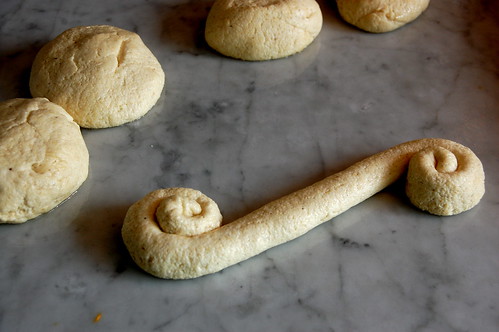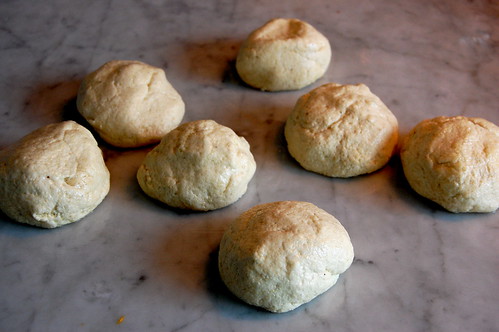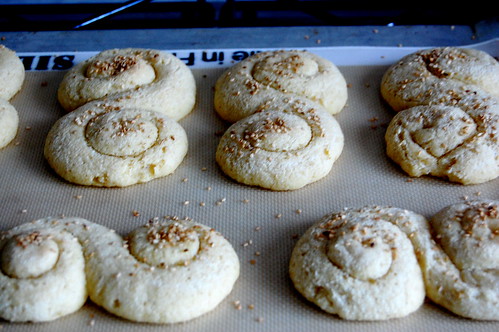
(I know, I have to stop it with the aliteration. I just can't help myself.) We spent two weeks in Sicily in October and, for all its similarities with North Africa, I couldn't help remarking on how different it felt. Everywhere I went people pointed out the parallels to me: "we use this Arabic word for this tree/neighborhood/food," "in this town couscous is the specialty," "this church was built but North African craftsmen," "we make orange and fennel salads too." But of course, all I could see were the differences: infrastructure, working ATM's, bars, wine, capacity for production, historic preservation, lack of checkpoints, clean streets!

But of course, perhaps I loved Sicily so much because it is so close to many things I love. All the Arabic architecture, the muqqarnas and mashrabbiyyas. The emphasis on seasonal local produce. The tiny regional specialties that are everywhere in one small town, but completely absent at the next town over. The fierce opinions about how food should be made and enjoyed. Like in Algeria, where almost every traditional bread is made with semolina flour, Sicilian bread is also made with semolina flour, often called pane giallo for its yellow color.

At home I found this recipe in one of Anissa Helou's books and thought it appropriate to make for our weekly bread. The bread is easy to make, just make sure to use fine grade semolina flour. At first, I thought the resulting bread was a bit too plain, although Paul, official blog taster, quite liked them. But then I toasted them with butter, and dipped them into some soup, and they started to grow on me. There is something lovely about their plain cornmeal-y sweetness, sort of like my grandmother's no-nonsense cast iron skillet cornbread. Crackly and ready to absorb up other flavors, and perfect for fall.

Sicilian Semolina Swirl Rolls
Heavily adapted from Anissa Helou.
1 teaspoon active dry yeast or 1 1/2 teaspoons instant SAF yeast
3 cups fine semolina
1/4 cup + 1 cup warm water
2 teaspoons salt
all-purpose flour for kneading
olive oil for greasing
1/4 cup sesame seeds for sprinkling
1. Place yeast in the bottom of a large ceramic bowl and add 1/4 cup warm water. Let sit until bubbly. Add in the semolina and salt, stirring with a wooden spoon to combine. Add the remaining 1 cup of warm water and stir until a rough dough forms. Begin to gently knead the dough with your hands so that it comes together. Continue to knead the dough, adding a little bit of flour as necessary to keep from sticking. I usually knead in the bowl, since I'm lazy, but you can turn it out and knead on a board also. Knead the dough for a good 5-8 minutes, semolina doughs need extra kneading to become smooth and supple.
2. Lightly coat the dough ball with olive oil to prevent sticking, cover the bowl with plastic wrap, and let rise in a warm place for 1 hour.
3. After one hour, knock down the dough, turn it over, and cover it again with plastic wrap and let rise another 45 minutes - 1 hour, until doubled in volume.
4. For the next step, I work directly on my countertop, or you could use a marble board. Grease the counter top well with olive oil, pull the dough apart into 6 or seven easy sized balls. Roll the balls around on the countertop to grease them, then let rest for 15 minutes (don't skip this step!).
5. Preheat oven to 450F. Line a baking sheet with parchment or a nonstick mat and scatter the mat with sesame seeds. Roll out each dough ball into a long rope. Roll each end of the rope in opposite directions to form an S swirl. Transfer the rolls to the baking sheet and sprinkle the top of the rolls with more sesame seeds. Cover the rolls lightly with plastic wrap and let the rolls rise for 45 minutes.
6. When the rolls are risen, transfer them to the oven and bake for 20-25 minutes, until puffed and lightly golden. Cool on a rack.






2 comments:
Something to make with my semolina flour!
Haha! Yes!
Post a Comment